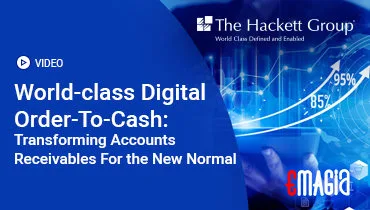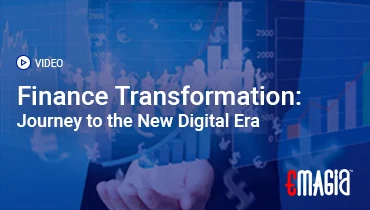Balance sheet reconciliation plays a vital role in financial oversight, helping ensure that an organization’s reported financial condition is accurate and dependable.
This involves aligning internal accounting data with external financial documents to uncover and resolve any inconsistencies. Implementing best practices in balance sheet reconciliation not only enhances the accuracy of financial reporting but also strengthens internal controls and supports informed decision-making.
Understanding Balance Sheet Reconciliation
Balance sheet reconciliation involves verifying that the balances in a company’s general ledger accounts align with corresponding external documents, such as bank statements, invoices, and receipts. This process is crucial for:
- Ensuring Accuracy: Detecting and correcting errors or omissions in financial records.
- Preventing Fraud: Identifying unauthorized transactions or discrepancies that may indicate fraudulent activity.
- Compliance: Adhering to regulatory guidelines and financial reporting standards is a key component of this process.
Key Components of Effective Balance Sheet Reconciliation
1. Regular Reconciliation Schedule
Establishing a consistent schedule for balance sheet reconciliation is vital. Depending on the volume and complexity of transactions, reconciliations may be conducted monthly, quarterly, or annually. Conducting reconciliations on a routine basis enables early identification of mismatches and upholds the credibility of financial information.
2. Standardized Procedures
Creating and following uniform procedures promotes reliability and streamlines reconciliation workflows. This includes:
- Documentation: It is important to keep thorough documentation for each reconciliation, including all relevant supporting materials.
- Templates: Utilizing standardized templates for different types of accounts.
- Checklists: Implementing checklists to ensure all steps are completed during reconciliation.
3. Segregation of Duties
Assigning distinct responsibilities for the preparation, review, and approval stages minimizes the likelihood of mistakes or fraudulent activity. This system of checks and balances enhances the reliability of financial reporting.
4. Focus on High-Risk Accounts
Prioritizing high-risk accounts, such as cash, accounts receivable, and inventory, ensures that discrepancies in critical areas are identified and addressed promptly. Ongoing oversight of financial accounts is necessary to maintain precision in financial reporting.
5. Continuous Monitoring and Review
Real-time tracking facilitates immediate identification of irregularities and allows for swift resolution. Routine evaluations and internal audits help detect recurring issues and pinpoint opportunities for process enhancements.
Leveraging Technology in Balance Sheet Reconciliation
1. Automation Tools
Utilizing automation tools streamlines the reconciliation process by:
- Data Matching: Automatically matching transactions between internal records and external documents.
- Error Detection: Timely identification of irregularities is critical to preventing more significant financial issues.
- Efficiency: Reducing manual effort and minimizing the risk of human error.
2. Integration with Financial Systems
Integrating reconciliation tools with existing financial systems, such as Enterprise Resource Planning (ERP) systems, ensures seamless data flow and enhances the accuracy of reconciliations.
3. Audit Trails and Reporting
Advanced reconciliation software provides comprehensive audit trails and reporting capabilities, facilitating transparency and compliance with regulatory requirements.
Training and Development
Providing ongoing training for finance personnel is essential to ensure proficiency in managing reconciliations. This includes:
- Skill Enhancement: Providing training on reconciliation procedures and tools.
- Awareness: Educating staff on the importance of accurate reconciliations and internal controls.
- Continuous Learning: Encouraging ongoing learning to stay updated with best practices and regulatory changes.
Challenges in Balance Sheet Reconciliation
Despite best efforts, organizations may face challenges in balance sheet reconciliation, such as:
- Data Inconsistencies: Discrepancies due to timing differences or data entry errors.
- Complex Transactions: Difficulty in reconciling complex or high-volume transactions.
- Resource Constraints: Limited personnel or technological resources hindering efficient reconciliation.
Addressing these challenges requires a combination of robust procedures, technological support, and skilled personnel.
How Emagia Enhances Balance Sheet Reconciliation
Emagia delivers cutting-edge tools that enhance the reconciliation process through automation and intelligence:
- Automation: Emagia’s platform streamlines transaction matching and identifies discrepancies automatically, significantly decreasing manual workload and potential for error
- Integration: Its ability to integrate effortlessly with current financial systems guarantees that reconciliations are both prompt and accurate.
- Analytics: Advanced analytics provide insights into reconciliation trends and areas requiring attention.
- Compliance: Emagia also offers detailed reporting and audit tracking features that aid in meeting compliance obligations.
By leveraging Emagia’s capabilities, organizations can achieve more efficient, accurate, and reliable balance sheet reconciliations.
FAQs
What is balance sheet reconciliation?
Balance sheet reconciliation is the process of verifying that the balances in a company’s general ledger accounts match corresponding external documents, ensuring the accuracy of financial statements.
Why is balance sheet reconciliation important?
These capabilities promote financial accuracy, deter fraudulent activities, reinforce regulatory adherence, and provide dependable data to inform strategic decisions.
How often should balance sheet reconciliation be performed?
The frequency depends on the volume and complexity of transactions, but it is commonly performed monthly, quarterly, or annually.
What are common challenges in balance sheet reconciliation?
Challenges include data inconsistencies, complex transactions, and resource constraints, which can hinder accurate and timely reconciliations.
How can technology aid in balance sheet reconciliation?
Incorporating modern technologies like automation and system integration simplifies the reconciliation process, reduces the chance of mistakes, and improves overall operational efficiency.
Conclusion
Implementing best practices in balance sheet reconciliation is essential for maintaining accurate financial records, preventing fraud, and ensuring compliance. By adopting standardized procedures, leveraging technology, and investing in training, organizations can enhance the efficiency and reliability of their reconciliation processes. Solutions like Emagia further empower organizations to achieve excellence in financial management through advanced automation and analytics.



